Darla and Spanky
A pair of English bulldog puppies born with spina bifida are the first patients to be successfully treated with a unique therapy—a combination of surgery and stem cells—developed at UC Davis by a team of veterinary and human medicine researchers and clinicians.
Read Darla and Spanky's full story

Mr. Fig Newton
Mr. Fig Newton, a 2-month-old terrier, was brought to the UC Davis veterinary hospital for evaluation of his cleft palate. Surgery to correct a cleft palate is not recommended until a dog is 6-7 months at the earliest, when his deciduous teeth have exfoliated, his permanent teeth have erupted, and his skull has developed further.
Read Mr. Fig Newton's full story

Derrick
Derrick, an 8-year-old Dutch Warmblood gelding, developed cataracts in both eyes. As a talented jumper that owner Terri Herrera planned to convert to a hunter, Derrick’s intended career didn’t allow much room for imperfect vision. After consulting with her veterinarian in Southern California, Herrera decided to make the 8-hour drive north to see the equine ophthalmology experts at the UC Davis veterinary hospital. It was there that she met Dr. Mary Lassaline, whom she credits with saving Derrick’s life.
Read Derrick's full story - (pdf)
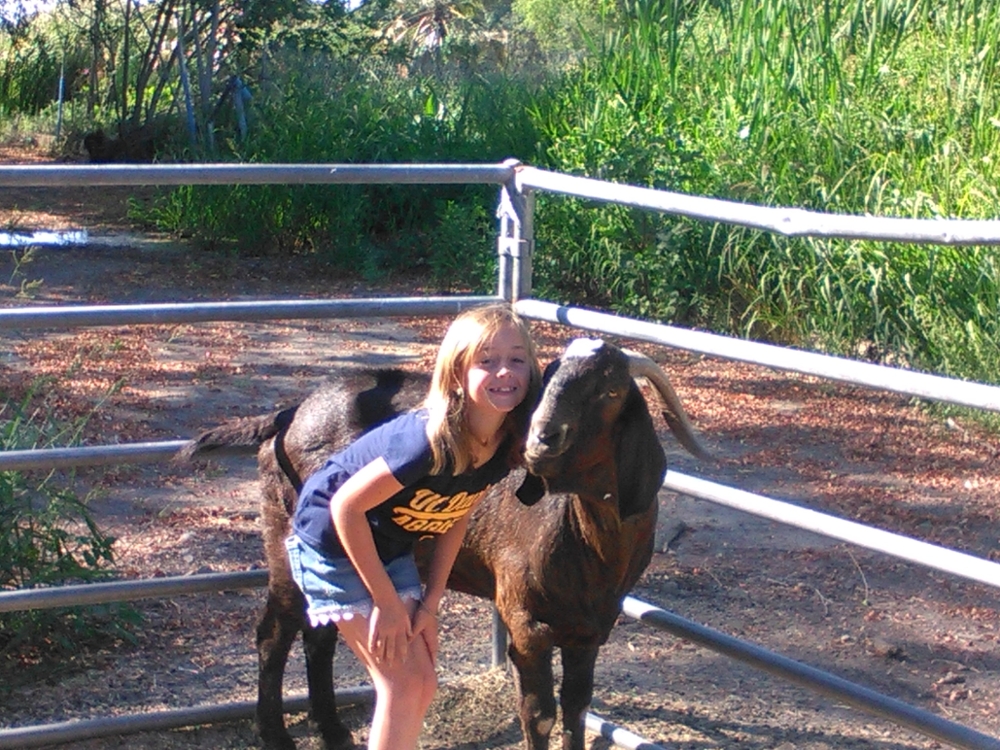
Pedro
Pedro, a 6-year-old male Nubian goat, was showing abnormal health signs that concerned his owners. He was found to be acutely recumbent, bloated and in discomfort. They called his veterinarian who found him to be severely dehydrated and suggested they immediately take him to the UC Davis veterinary hospital.
Read Pedro's full story

Hank
Hank, a 10-year-old male Australian cattle dog, lives with his family in a rural area in the foothills of the Sierra Nevada Mountains. After roaming the property recently, he returned home bleeding profusely from the mouth, and it appeared his tongue was missing. Hank was taken to a local animal hospital where veterinarians were able to stop the bleeding and manage his shocked condition. Due to the severe nature of his wound, he was transferred to the UC Davis veterinary hospital.
Read Hank's full story

Kabang
Kabang, a shepherd mix dog, was brought to UC Davis from the Philippines in October 2012 for surgery to repair massive facial wounds caused when her snout was torn from her face after being hit by a motorcycle. After arrival at UC Davis, it was discovered that she also had heartworm disease and a type of infectious cancer, known as a transmissible venereal tumor. Treatment for both of these health problems was necessary before dental and surgical procedures could be performed to deal with her facial wound. Because of the nature of Kabang’s health problems, each treatment had to be successfully completed before the next began.
Read Kabang's full story
Loca
Loca, a 4-month-old female Staffordshire bull terrier, was bitten by another dog so severely that her right zygomatic arch (cheekbone) and mandible (jawbone) were fractured, and her temporomandibular joint (TMJ) suffered extensive damage. In addition, there were multiple puncture wounds on her face and neck.
Read Loca's full story

Thor
Thor, a 7-month-old male pygmy goat, was brought to the UC Davis veterinary hospital after he and his pen mate were attacked by a dog. Unfortunately, his pen mate did not survive the attack. Before bringing Thor to the hospital, his owner immediately called their primary veterinarian, Dr. Mary Pride Clark, who cleaned and sutured Thor’s wounds and administered antibiotics and pain medication. After initial emergency care, Dr. Clark, a UC Davis School of Veterinary Medicine alumna, suggested that Thor be seen by the experts in the UC Davis Livestock Medicine & Surgery Service for further evaluation and ongoing pain management.
Read Thor's full story
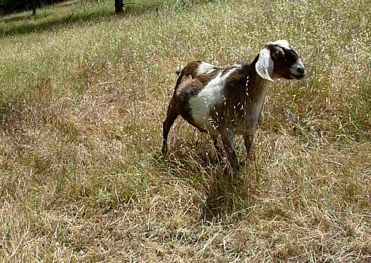
Spring
Animals suffer many of the same ailments that people do—including mastitis, a painful infection of the mammary glands. When Spring, a 12-year-old Nubian goat, began acting lethargic, lost her appetite and appeared to have a swollen udder this past May, the Sillis family grew concerned. Spring had been part of the family since she was born and raised on their property as part of daughter Claire’s 4H project.
Read Spring's full story

Vanilla Bean
Vanilla Bean, a 1-year-old female Burmese cat from Mill Valley, California, was brought to a veterinary cardiologist for respiratory distress. She was diagnosed with a rare congenital heart defect that does not allow blood to flow properly through the chambers. This improper flow can cause too much blood to collect in one chamber, create pressure, enlarge it, and ultimately lead to congestive heart failure. A cardiologist at UC Davis previously performed a special technique for correction so Vanilla Bean was brought to the VMTH for an extremely rare heart surgery.
Read Vanilla Bean's full story

Harvey
Harvey, a brindle-colored male boxer, came to us through the Marley’s Mutts Dog Rescue. In short, they save lost, neglected and abandoned dogs and find them loving homes. And sometimes, you can add “abused” to that list of adjectives. Harvey was one of those dogs.
Read Harvey's full story

Bailey
Bailey, a 4-year-old male cocker/poodle mix, was brought to the VMTH Internal Medicine Service in the summer of 2002 for severe coughing and wheezing. He had recently visited Arizona, and his veterinarian was most suspicious of coccidioidomycosis. Bailey was not responding to treatment, so his owners decided to bring him to UC Davis.
Read Bailey's full story (pdf)

Peydro
Woodland Police Department K-9 Officer Peydro was critically injured when he was struck by a car while pursuing a suspect. He suffered damage to his teeth and jaws, as well as extensive damage to his vertebrae. Pins were placed in his lower back during a 4-hour surgery performed by UC Davis veterinary neurosurgeons. Thanks to the hospital’s dedicated team, Officer Peydro was able to walk out of the hospital only nine days later. Officer Peydro then continued to get stronger through rehabilitation treatments with the hospital.
Read Peydro's full story

Bella
Bella, a 16-year-old American Quarter Horse mare, has historically suffered from chronic hind limb issues. She was previously diagnosed with bilateral osteoarthritis of the lower tarsal joints (hock), but intra-articular medication had failed to significantly improve her lameness on the right hind. Bella had been ridden by two small children for the past three years and is an integral part of their family. Due to the severity of this lameness, however, she could no longer be ridden. Committed to improving Bella’s condition, her family brought her to the UC Davis veterinary hospital.
Read Bella's full story

Flynn
Flynn, a yellow Labrador, and his family member Mason, a 16-year-old autistic boy, have formed a bond for the ages. When Flynn recently became ill, Mason vowed to do anything to help him. A community stepped in to make sure Flynn go the best care possible.
Read Flynn's full story

Handsome
Handsome, a 16-year-old Thoroughbred gelding, recently underwent “tie-back” surgery after videoendoscopy was used to diagnose him with left laryngeal hemiplegia. His left arytenoid cartilage was completely paralyzed and was partially (and at maximal effort almost completely) obstructing his airway.
Read Handsome's full story (pdf)

Ari
Ari, an 11-year-old Rhodesian ridgeback, has been a patient of the UC Davis veterinary hospital for most of her life. Like many patients of the Hemodialysis and Blood Purification Unit of the hospital’s Internal Medicine Service, Ari is a “lifer” – one of those patients that everyone at the hospital knows, having been to nearly 75 appointments over the past seven years.
Read Ari's full story

Whiskey
Whiskey, a 60-pound Munsterlander dog from San Francisco, still tugs on chew toys and snacks on doggie treats thanks to veterinary surgeons and biomedical engineers at UC Davis, who adapted cutting-edge biomedical technology to regrow jawbones in dogs that have lost bone to injuries or removal of cancerous tumors.
Read Whiskey's full story

Spartacus
Spartacus, a 1-year-old male California sea lion was brought to the VMTH by the the Marine Mammal Center in Sausalito after being found lethargic on the beach.
Read Spartacus' full story (part 1)
Read Spartacus' full story (part 2)

Abby
"We made the decision to give IV fluids over the next several hours to allow her the best chance of survival. If she continued to get worse, I was to load her in the trailer and take her to the University of California-Davis Veterinary Hospital, a two- to three-hour drive away. Around 3:30 a.m., the medication began to wear off, and Abby tried to lie down again. It was becoming increasingly difficult to get her up. So at 4 a.m., I loaded Abby into the trailer and started the long drive to UC-Davis."
Read Abby's full story (pdf)

Bebe
If you let her off her leash at the front door of the UC Davis veterinary hospital, Bebe, an 8-year-old American bulldog, could probably find her own way to the Hemodialysis Suite. That’s because for the last year, Bebe has been coming to UC Davis twice a week for dialysis treatments. Bebe is so well known that she can’t walk the halls of the hospital without a dozen people stopping her to say hello.
Read Bebe's full story

Bench Creek Ranch
When rancher Paul Plouviez—owner of the 600,000-acre Bench Creek Ranch east of Fallon, Nevada—noticed that much of the mountainous areas of his large ranch were underutilized by his cattle, he thought back to his native France. He noticed that the terrain and climate of the area, with its extremely hot summers and cold winters, closely resembled the Pyrenees mountain range in southern France. He thought Bench Creek Ranch might be ideal land to raise Gascon cattle, a breed which thrives in the Pyrenees.
Read Bench Creek Ranch's full story
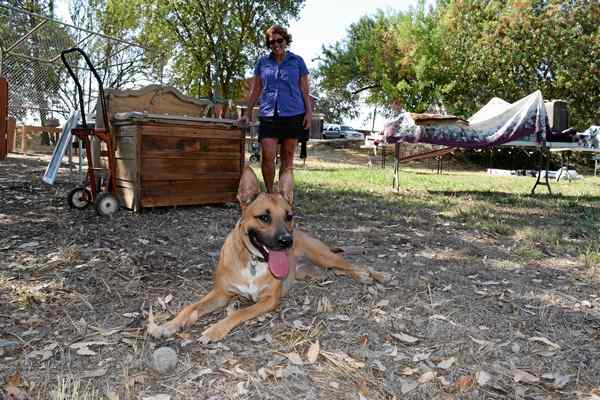
Evie
After surviving a major surgery at the UC Davis Veterinary Medical Teaching Hospital in June 2016, Evie, a 2-year-old Belgian Malinois mix, is the star of the show today.
Read Evie's full story

Peppy
Peppy, a 21-year-old Quarter Horse gelding, was exhibiting difficulty urinating and also had blood in his urine. His owner had him examined by his primary care veterinarian, who identified two stones in his bladder. Based on the diagnosis, they decided it was best to refer Peppy to the equine experts at the UC Davis veterinary hospital for treatment.
Read Peppy's full story

Teddy
At the UC Davis School of Veterinary Medicine's 2016 graduation ceremony, 137 students received their Doctorate of Veterinary Medicine degrees. In a barn a few hours away, a 19-year-old Thoroughbred horse unknowingly became a doctor also. “Dr. Teddy” received an honorary degree from UC Davis for being a “Master Equine Educator” for the students, having helped them learn equine health at more than two dozen appointments and a lengthy stay at the school’s teaching hospital over the past year.
Read Teddy's Full Story

Flexible
In 2012, Irish sport horse stallion Flexible was coming off a spectacular year. He, along with rider Rich Fellers, won the FEI World Cup (at 16 years of age – the oldest horse in the event) and also competed in the London Olympics. Flexible was named International Horse of the Year, and Fellers was named Equestrian of the Year by the United States Equestrian Federation (USEF). In 2013, however, Fellers noticed some mild lameness in Flexible, who was then examined by his primary caretaker in Oregon, Dr. Mark Revenaugh, a national level sport horse veterinarian and a renowned expert in the diagnosis and treatment of lameness and performance issues.
Read Flexible's full story

Cyrus
Life wasn’t looking too bright last year for Cyrus, a 10-year-old German shorthaired pointer (GSP). Not only had he lost his home, he was also losing his sight. Living in a shelter, Cyrus was suffering from corneal endothelial dystrophy (CED), a disease in the eyes that causes premature degeneration of endothelial cells, which are critical to pumping fluid out of the cornea and maintaining transparency.
Read Cyrus' full story

Cherokee
Cherokee, a 2-year-old miniature therapy horse, was recently brought to the veterinary hospital’s Large Animal Clinic with a persistent case of colic that her local veterinarian was unable to treat. On presentation, Cherokee had a distended abdomen, was uncomfortable, and required sedation. Radiographs indicated an intestinal impaction and gas distension. An intravenous catheter was placed in hopes of treating the case non-surgically.
Read Cherokee's full story (pdf)

Daisy
Daisy, a 1-year-old female spayed pit bull/basset hound mix, was recently surrendered to the Yolo County SPCA after her owners suspected she had become paralyzed. Ashley Carr, a staff member at the UC Davis Veterinary Medical Teaching Hospital and SPCA volunteer, noticed that Daisy was still able to wag her tail – which would indicate that she wasn’t completely paralyzed. Carr contacted the VMTH's Neurology and Neurosurgery Service, to see if there was anything UC Davis could do to help Daisy.
Read Daisy's full story

Bean
Each year, Karen Vernau examines 500 cats and dogs as chief of the Neurology and Neurosurgery Service at the UC Davis Veterinary Medical Teaching Hospital. So what made Bean stand out? Where do we begin?
Read Bean's full story

Castro
On February 24, 2014, a complete physical examination was conducted on Castro, the Sacramento Zoo’s Sumatran tiger, one year to the day from his lymphoma diagnosis and nearly five months from his surgery to place a ureteral stent. He continues to improve and appears healthier now a year later. At the exam, Castro underwent extensive diagnostic testing to evaluate the status of his cancer and renal disease. A team of seven veterinarians, two technicians, one hospital assistant and many skilled keepers were assembled from the zoo’s Murray E. Fowler Veterinary Hospital and the UC Davis Veterinary Medical Teaching Hospital to make the exam as efficient as possible.
Read Castro's full story
Valentine
A foal rescued from a ravine on Valentine's Day was brought to the UC Davis veterinary hospital where diagnostic imaging tests revealed a pelvic fracture. As a community rallied together to save her, she was spared surgery and found a new home.
Read Valentine's full story

Frankie
On September 18, 2012, campers in Northern California heard an animal crying somewhere in the woods. They vowed not to leave until they found this obviously hurting animal. What they found was Frankie, tied to a tree and badly injured. Upon further examination, it appeared Frankie had been shot in the face. The campers immediately took Frankie to a veterinarian who examined him, but advised that Frankie be referred to UC Davis. It was determined that the litany of injuries Frankie had sustained included three fractures in his left rear paw, a severe gunshot wound fracture of his right mandible (lower jaw bone) and several gunshot pellets in his face. It was also discovered that Frankie had a healed, full thickness penetrating injury to his right cornea and cataracts in both eyes.
Read Frankie's full story

Joy
There aren’t too many cows still around who lived through the Reagan administration. Most cows can live to be 15 or maybe even 20, but Joy the Holstein cow is an amazing 30 years old. Born in 1983, she came to live on the ranch of Pat and Dianna Evans shortly after in El Dorado Hills, California. They named Joy and two other calves, Mary and June, after waitresses who worked in the family’s restaurant.
Read Joy's full story

Dunham
Dunham, a 5-year-old German shepherd, was brought to the UC Davis veterinary hospital after an immediate onset of a complete paralysis of his left pelvic limb, and partial paralysis of the right one. He could not stand or walk with his hind legs. His dedicated owner rushed him to his veterinarian who referred Dunham to UC Davis. Dunham's dedicated owner immediately drove all the way from Fresno to Davis in the late evening where emergency veterinarians were waiting for him after his midnight arrival.
Read Dunham's full story

Emma
In early 2013, Emma started having tremors while sleeping and seemed unbalanced. Emma’s owners—Jeff and Jen Collins of Chico, California—brought her to their veterinarian who diagnosed her with an inoperable tumor on her brainstem, and gave her two months to live. Determined to help her, the Collins’ were referred to the Veterinary Medical Teaching Hospital. They met with faculty oncologists Alain Theon and Michael Kent, who suggested treating Emma with stereotactic radiation. While not a cure, it could improve her quality of life and hopefully increase it.
Read Emma's full story

Groby
Born with no front legs, Groby's owner rescued him from a dire animal hoarding situation where inbreeding was occurring. Since the rescue, Groby's owner has been tireless in getting the word out about the dangers of puppy mills and inbreeding. Both of Groby's hind legs needed knee surgeries, which our Orthopedic Surgery Service performed over the past six months.
Read Groby's full story

Hoshi
Hoshi, a 10-year-old female collie from Montana, had swelling and unusually bad breath in her mouth in the summer of 2013. Her local veterinarian in Montana diagnosed squamous cell carcinoma and removed some diseased bone from the front of Hoshi’s mouth. However, Hoshi would need more treatments beyond what was available in Montana. Research turned up the option of taking Hoshi to UC Davis for treatment, so her owner called the world-renowned veterinary facility to discuss. She soon found herself on a 15-hour roadtrip, with Hoshi in tow, to California.
Read Hoshi's full story

Kopper
Kopper, a 14-year-old Belgian Malinois from Tennessee, is a retired K-9 officer that was brought to the University of Tennessee’s (UT) veterinary hospital for treatment of a paralyzed larynx and megaesophagus. While at UT, his prostate issues were discovered. Veterinarians there were familiar with Dr. Bill Culp’s clinical trial and referred Kopper’s owners, Matt and Heather Thompson of Maryville, Tennessee, to UC Davis. Matt, a corporal with the Blount County (TN) Sheriff's Department K-9 unit, along with Heather, loaded up his former law enforcement partner and traveled the 2,500 miles to California to see Dr. Culp.
Read Kopper's full story

Marley's Mutts
The Dentistry and Oral Surgery Service at the UC Davis Veterinary Medical Teaching Hospital worked extensively with a group of rescue dogs whose jaws needed mending. In jeopardy of being euthanized due to their extensive injuries, three dogs were brought to UC Davis for one last ditch effort to save them. Luckily for the pooches, all were rescued by Marley’s Mutts, a non-profit organization that rescues, rehabilitates, trains and re-homes dogs from Kern County’s (CA) animal shelters. Marley’s Mutts wanted to do everything they could to save the dogs, and UC Davis surgeons had the necessary skills and equipment to help.
Read Marley's Mutts' full story

Odetta
Odetta, a 6-year-old Labrador retriever, is trained to detect dropping blood sugar levels in diabetics. Odetta has alerted her owner, Kathy Allbright, to low blood sugar levels countless times in their four years together. Odetta’s keen sense of smell has saved Kathy from many potential episodes of hypoglycemia over those years. In 2011, it was time for Kathy to return the favor. She noticed a lump in Odetta’s cheek and a biopsy revealed a fibrosarcoma, an aggressive tumor.
Read Odetta's full story (pdf)
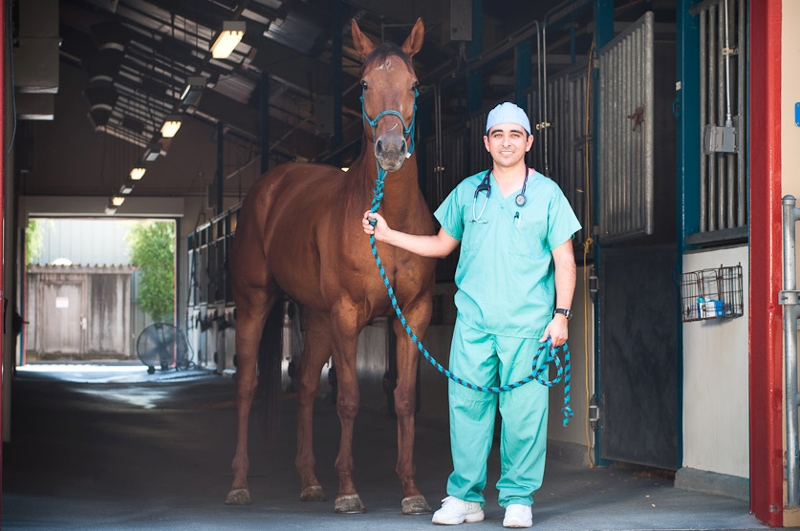
Hulahalla
In the spring of 2011, a 4-year old Thoroughbred named Hulahalla was donated to the Center for Equine Health after suffering a tendon lesion on her left forelimb while on the racetrack. She was treated for that lesion, and recovery continued into the fall of 2011. Hulahalla then took a turn for the worse, developing laminitis. She became severely painful and was unresponsive to the current standard of care. For humane reasons, euthanasia was being considered.
Read Hulahalla's full story (pdf)
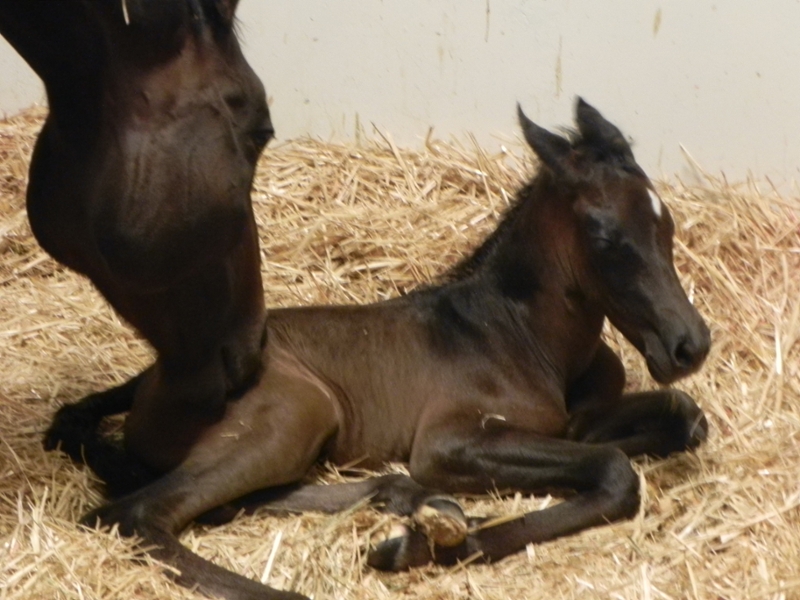
Lord Nelson (PICSI)
At midnight on a warm summer evening in the barns at the UC Davis veterinary hospital, a first in equine medicine at UC Davis occurred. As Dr. Bruce Christensen, chief of the hospital’s Equine Reproduction Service, watched on, a mare gave birth to the first foal ever born at UC Davis by in-vitro fertilization. Through intracytoplasmic sperm injection (ICSI), an in-vitro process of impregnating a mare was successful at the renowned veterinary school. This story’s origins, however, go back almost a quarter of a century.
Read Lord Nelson's full story

